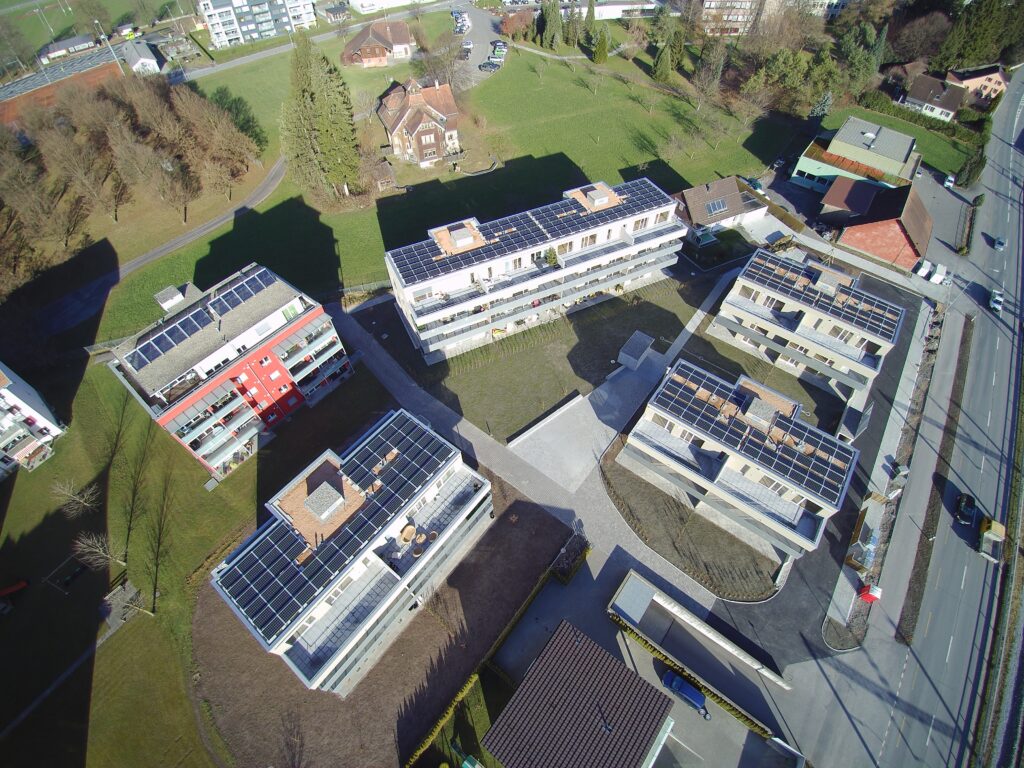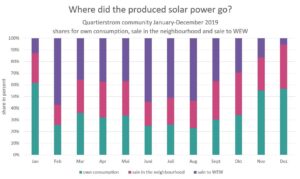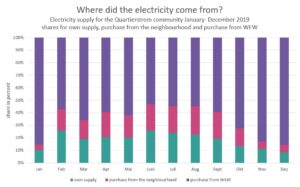Field test successfully completed

For one year, 37 households in Walenstadt have sold solar power in a local blockchain-based electricity market. After a year in the field, project participants from research and industry give a positive appraisal. Thanks to the local electricity market, the local community the purchase of the of the locally produced solar power almost doubled. The 37 households covered 33% of their electricity demand with solar power produced in the neighborhood.
Almost no one wants to pay more
One new feature of the system was that participants could use a portal to set a minimum sales price for their solar power and a maximum purchase price to buy solar power from their neighbors. The participants frequently adjusted the price limits, especially at the beginning. But the price limit they set for buying local solar power was rarely higher than for normal power from the grid. On average, the participants were willing to pay just under 19 centimes per kilowatt hour – less than the cost of mains power, which stands at 20.75 centimes. Fewer than 10% of offers were above this rate, despite the fact that many people had declared their willingness to pay more for local solar electricity in the surveys conducted beforehand.
Automatic pricing is more effective
In order to compare different market models, the researchers deactivated the feature allowing individual pricing for a period of one month and replaced it with an automatic pricing system. In surveys, a little over half of households stated that they preferred automatic pricing. “What was surprising was that participants who used the portal frequently tended toward automatic pricing and vice versa,” says Verena Tiefenbeck, leader of the Bits to Energy Lab at ETH Zurich. “Based on our experiences, we don’t consider individual pricing to be decisive for a local electricity market in the future.”
Effectively raising awareness
What does seem to be important, on the other hand, is that participants are able to monitor production and consumption, as well as their purchases and sales, in real time. This function was very popular with users and contributed to raising awareness. Indeed, many participants said that they now use electrical appliances more when the sun is shining. They saw the peak and off-peak tariff system that still applies today as outdated when applied to renewable energies.
Low power consumption
The software proved highly reliable and its power consumption was low. The small computers that are used as smart meters and blockchain nodes consumed around 3,300 kilowatt hours of energy over the duration of the project. In terms of the volume of power traded in the local market, this consumption amounted to around 4%.
Read a more detailed report in our press release.

In relative terms, own consumption decreased with high electricity production. Over the year, self consumtion in the Community as a whole was almost doubled.

On average, the neighbourhood electricity community was able to supply itself to one third of its needs.